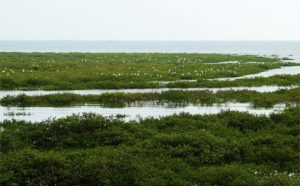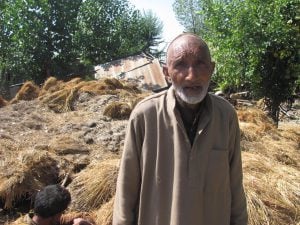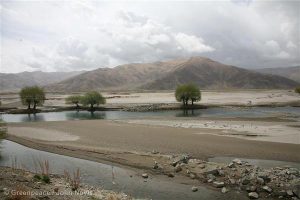The time may have come for a new approach to restoring degraded lands in China. The country has many more trees than it did 40 years ago – several million hectares of forest cover have been regained, in fact – but efforts to restore land in a one-size-fits-all manner are producing diminishing returns. With planted monoculture forests failing in many parts of the country, a more sustainable, landscape-level approach to forest restoration will help China better meet present and future needs.
Just north of Beijing, a project to restore a diversity of trees to a variety of land uses in the watershed of the vital Miyun Reservoir Basin is testing the potential of this alternative approach, which aims to produce self-sustaining forests and parklands by welcoming a variety of tree species back to a variety of land uses, tailored to the local landscape.
China’s forest restoration efforts have been immense and impressive. Through six different tree planting programs the Chinese government has invested more than 500 billion RMB (US$70billion) in forest protection and restoration in the last ten years alone, resulting in more than eight million hectares of new forested land. Today, roughly 60 percent of China’s forests, on a land area basis, are newly established. Few countries can boast such gains – and fewer still that are undergoing rapid economic growth.
However, these gains have been tempered by a focus on quantity over quality. Most of the restoration in China has occurred through the establishment of monoculture plantations, which lack the diversity required for a fully functioning ecosystem. Though some of these replanted forests have proven successful – the return of trees to north China’s fragile Loess Plateau has clearly halted drastic soil erosion – many have not.
Forest shelterbelts created to fight desertification in north China, for example, have already begun to die in great brown and gold waves. Notwithstanding scientific debate on the issue, many believe that our monoculture plantations will not prove as resilient to climate change as they need to. Nor will they provide as many of the services we need, like cleaner air and water, as true natural forests. A full account of the health of China’s monoculture forests may come soon: experts are keenly awaiting the final report of the 2000-2010 Ecosystem Assessment commissioned by the Ministry of Environmental Protection.
There are good reasons for pursuing afforestation through monoculture plantations – including faster progress, easier planting, and simpler progress evaluation. But increasing demands on China’s ecosystems now mean tree plantings need to be accomplished in a way that creates durable, high-quality forested landscapes.
At the International Union for Conservation of Nature (IUCN), we have been trying to do this for one of the most vital forested lands in the world: the rolling hills of the Miyun region, the primary source of clean drinking water for Beijing’s population of 21 million people.
Beijing suffers chronic and severe water shortages. It has lower per-capita water availability than some Middle Eastern countries and half the regular precipitation of New York City, a municipality one third Beijing’s size. Over the last few years, Beijing’s water tables have dropped so low that existing wells cannot tap them. As early as 1998, according to Ma Jun, two thirds of Beijing’s 890,000 wells had become useless.
To help to tackle this problem, in partnership with Beijing Forestry Society and the international NGO Forest Trends, we carried out a watershed-scale analysis of the Miyun region to see where restoring diverse trees across the landscape (rather than in monoculture plots) could increase the filtration, and potentially flow, of water heading for taps in Beijing.
We assessed 136 water basins for priority restoration status based on numerous socio-economic and bio-physical factors (such as current land use, and their potential to conserve water). We eventually selected two sites, one in Miyun district an hour’s drive northeast of Beijing, and one in Fengning county, in neighbouring Hebei province, to start large-scale restoration.
So far, we have hosted workshops with local leaders and stakeholders in each district, with the result that our analysis has been integrated into land-use zoning and economic planning in both areas. With the support of central and local government agencies, and local leaders, we are now preparing an action plan for restoration in these sub-basins for the next three to five years. It will determine what trees should be planted, where and when, and how to train landowners to plant, care for and monitor them.
Our goal in Miyun is to work with the dynamic nature of healthy ecosystems, and welcome back trees within varied land uses, including in agricultural fields, managed woodlots and protected forests, and alongside pastures, rivers and wetlands. Our focus will be on “functional forests”, making many tree species available for planting to meet the diverse needs of the land users. Trees in farmlands could be planted to generate income, perhaps from fruit sales, as well as to trap and filter-out fertilisers that may otherwise end up in nearby waterways. Trees on ridgetops would be selected to hold soil fast and, perhaps, to generate income from occasional timber sales. The core idea is to maximise the natural benefits of a restored landscape through a variety of different interventions.
Such a landscape approach to restoration will invariably help China meet its commitment to increase forest area by 40 million hectares and forest stock – the total mass of growing trees – by 1.3 billion cubic metres by 2020 as a national response to climate change and other environment and development challenges. It will take time, but it will be worth it.







